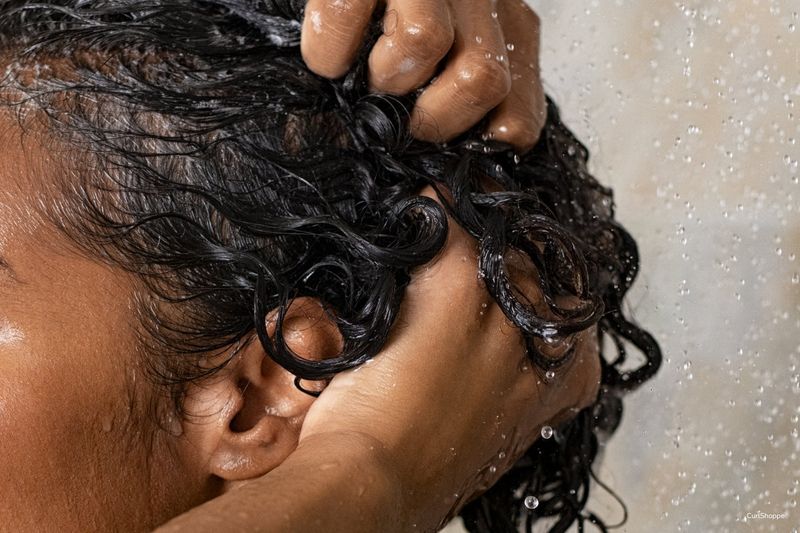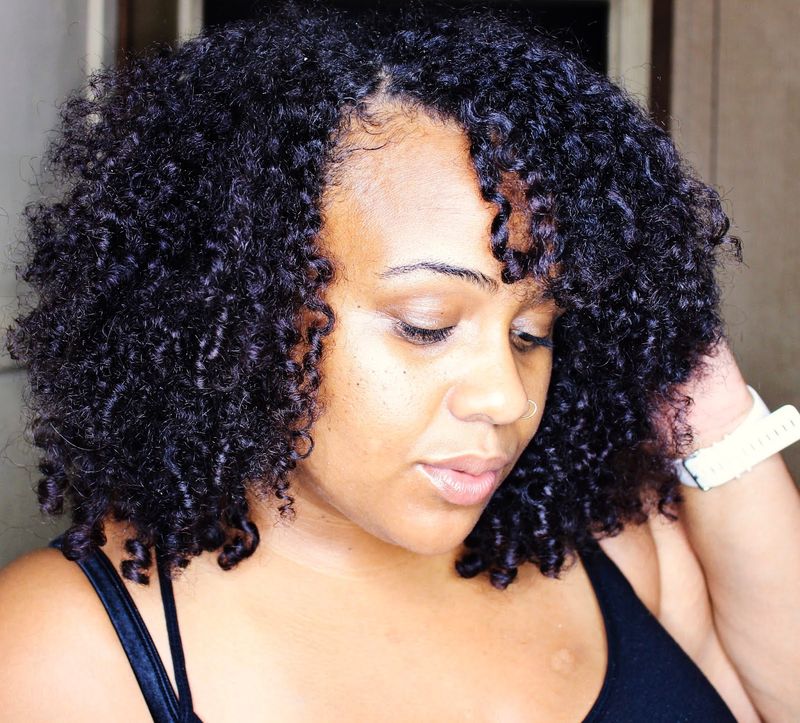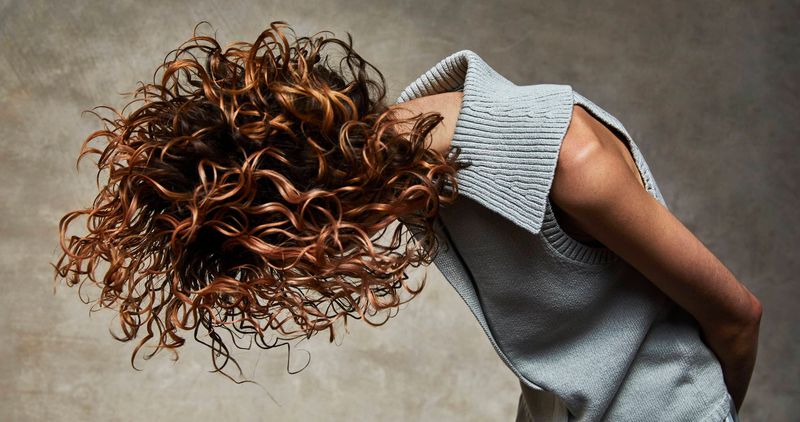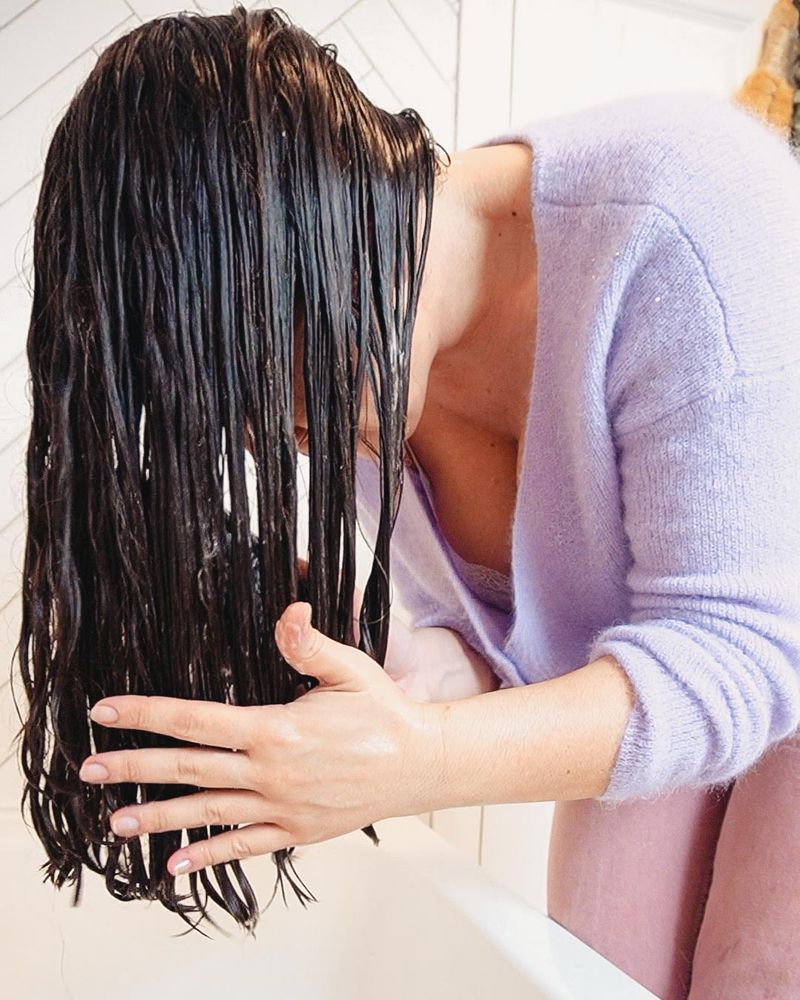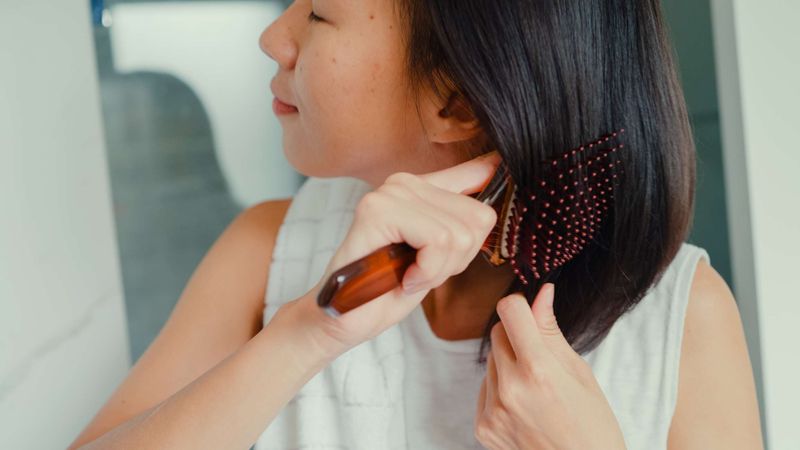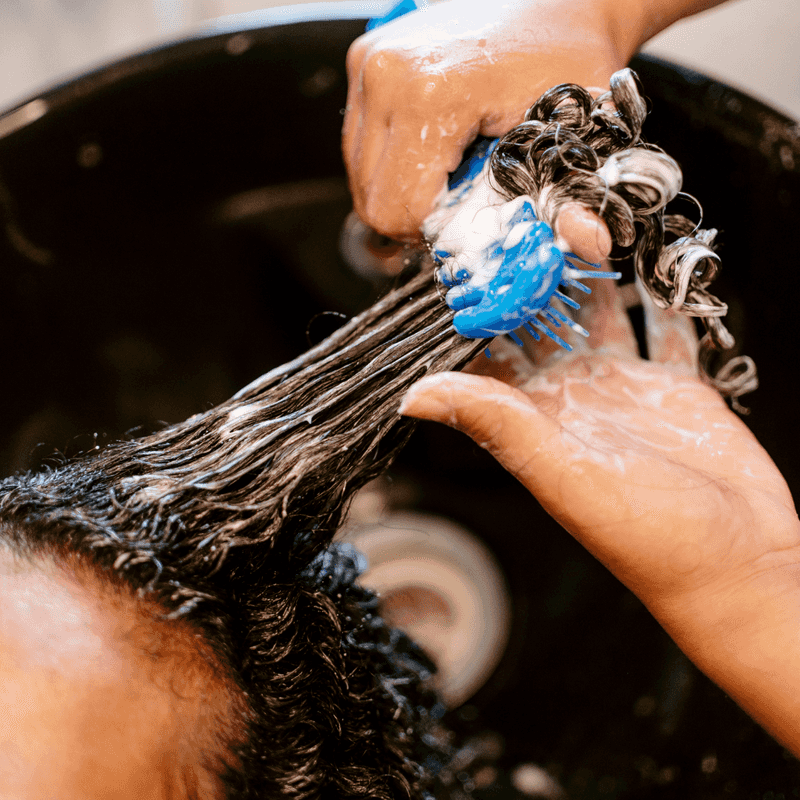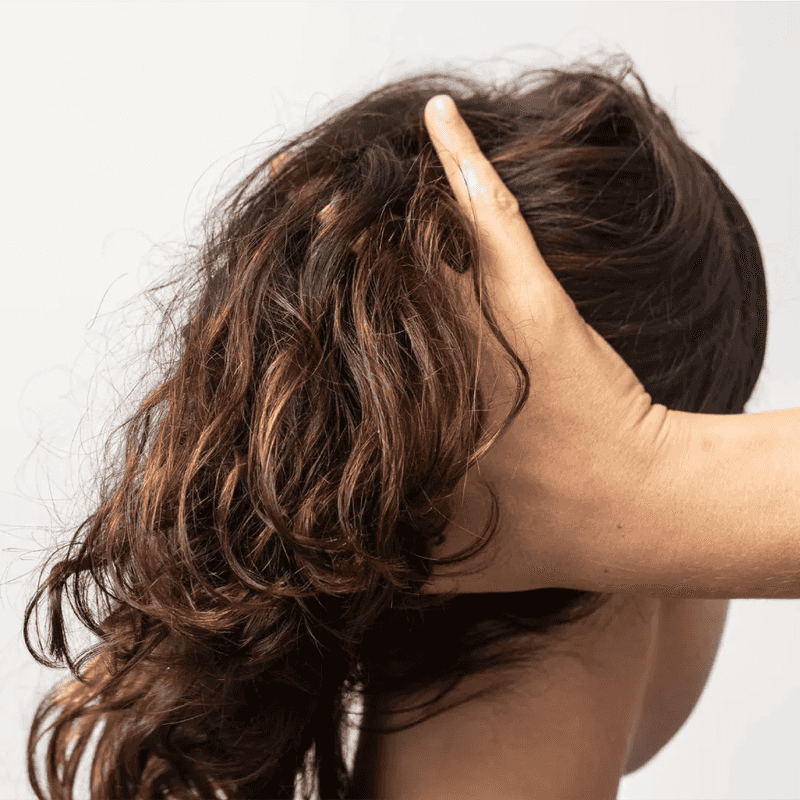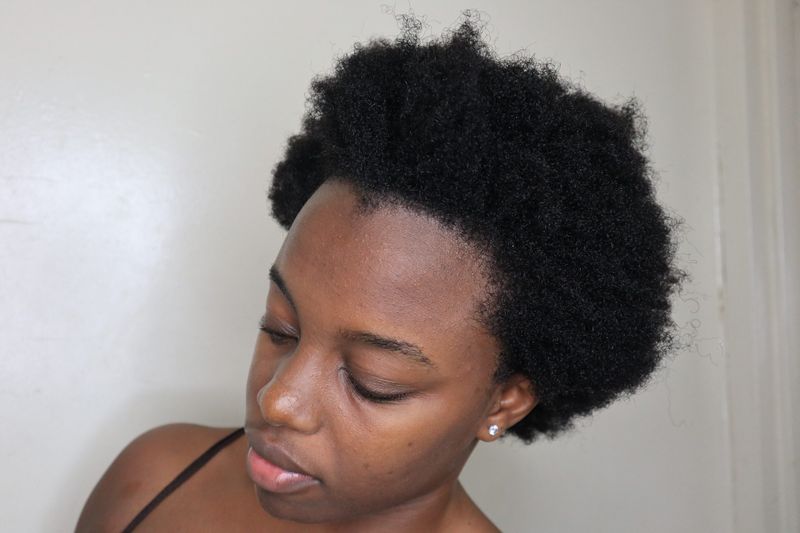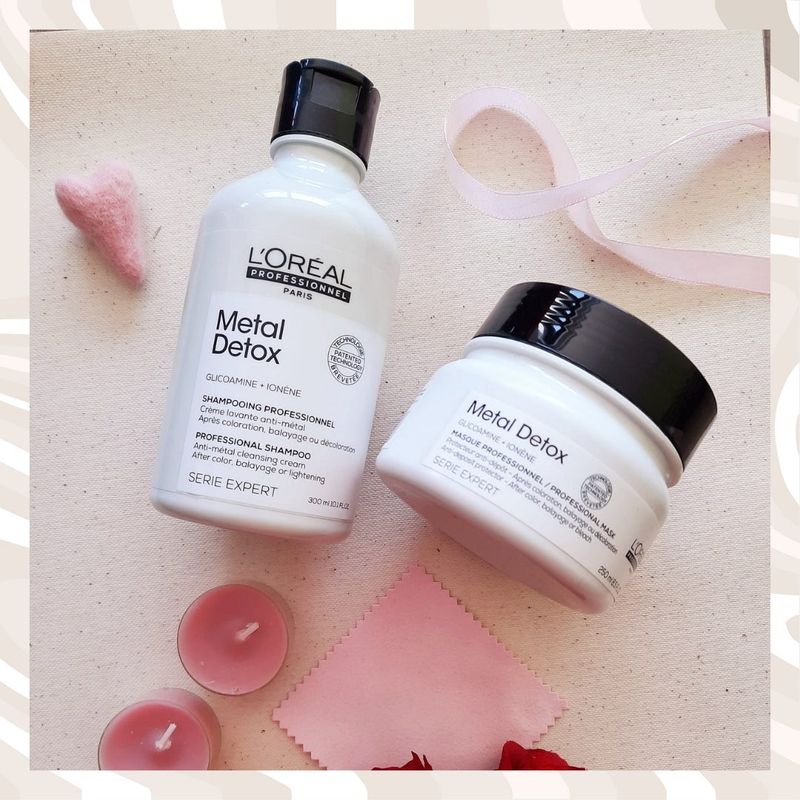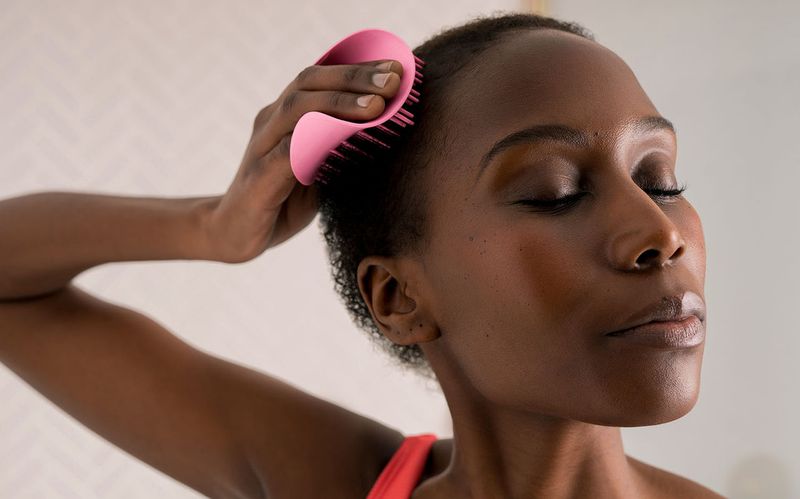Low porosity hair can be tricky to manage if you don’t understand how it works. This hair type has tightly closed cuticles that make it harder for moisture to penetrate. Learning about your low porosity strands will help you choose the right products and techniques for healthier, more manageable hair.
1. Water Beads Up On Your Strands
When you shower, water might sit on top of your hair instead of being absorbed. This happens because the tightly closed cuticles create a water-resistant barrier.
Try this simple test: drop water on dry hair and watch if it beads up before slowly soaking in.
Related: -7 Straight-Hair Problems No One Talks About And 8 Easy Fixes That Shine
2. Products Tend To Sit On Top
Ever notice how oils and conditioners seem to coat your hair rather than sink in? Low porosity hair struggles to absorb products due to those sealed cuticles.
Your hair might feel product-heavy or greasy even after rinsing thoroughly.
3. Takes Forever To Dry
Low porosity hair is notorious for its long drying time. Once water manages to penetrate those tight cuticles, it gets trapped inside and takes ages to evaporate.
Your hair might still feel damp hours after washing, especially in thicker sections.
4. Struggles With Protein Overload
Your low porosity hair likely doesn’t need much protein. The compact cuticle structure already makes your strands strong, so protein-heavy products can cause stiffness and breakage.
Watch for brittleness after using protein treatments—that’s a warning sign.
5. Prone To Product Buildup
Those resistant cuticles make your hair prone to product accumulation. Residue from conditioners, oils, and styling products can pile up over time.
This buildup blocks moisture and makes your hair look dull and feel weighed down.
6. Resistant To Color Treatments
Dyeing low porosity hair can be challenging because color molecules struggle to penetrate those tight cuticles. You might need longer processing times or multiple sessions.
The upside? Once color does take, it tends to last longer!
7. Tangles Easily When Wet
Despite being generally strong, low porosity hair can tangle badly when wet. The smooth cuticles can catch on each other, creating knots that seem to appear out of nowhere.
Always detangle gently, starting from the ends.
8. Moisture-Protein Balance Is Crucial
Finding the perfect balance between moisture and protein is tricky but essential. Low porosity hair typically needs more hydration than protein to stay healthy.
Pay attention to how your hair responds to different treatments and adjust accordingly.
9. Loves Heat For Deep Conditioning
While heat can damage hair, controlled warmth helps low porosity strands absorb moisture during deep conditioning. Heat temporarily lifts those tight cuticles, allowing beneficial ingredients to penetrate.
A steamer or hooded dryer becomes your best friend!
10. Often Looks Shiny But Feels Dry
The closed cuticles of low porosity hair create a smooth surface that reflects light beautifully. Your hair might look glossy even when it’s desperately thirsty inside.
Don’t let appearances fool you—regular moisture is still essential.
11. TIP: Use Lightweight, Water-Based Products
Heavy butters and thick creams often sit on low porosity hair without penetrating. Opt for water-based, lightweight formulas that can slip past those tight cuticles.
Look for products with aloe vera, glycerin, or honey as main ingredients.
12. TIP: Apply Products To Damp Hair
Slightly damp hair absorbs products better than soaking wet or completely dry strands. After washing, gently towel-dry your hair until it’s just damp before applying any products.
This sweet spot maximizes absorption potential.
13. TIP: Clarify Regularly To Remove Buildup
Product buildup is your enemy. Use a clarifying shampoo every 2-3 weeks to remove residue that blocks moisture from entering your strands.
Follow with a deep conditioning treatment to restore hydration after clarifying.
14. TIP: Embrace Warm Water Rinses
While cold water seals the cuticle, low porosity hair benefits from warm water washing. The warmth helps open those stubborn cuticles so cleansers and conditioners can work effectively.
Save cool rinses for the very end.
15. TIP: Try The Greenhouse Method
The greenhouse method involves applying a moisturizing product, covering your hair with a shower cap, and letting your body heat work magic. This technique helps products penetrate resistant strands.
Leave it on for 20-30 minutes.
16. TIP: Layer Products Thinnest To Thickest
Strategic product layering makes a huge difference. Start with the lightest, most water-based products and gradually move to heavier ones.
This technique helps each product absorb properly without creating a barrier for subsequent layers.
17. TIP: Invest In A Steamer
A hair steamer is a game-changer for low porosity hair. The gentle, moist heat opens the cuticle better than dry heat, allowing deep conditioners to penetrate effectively.
Even portable steamers can make a dramatic difference.
18. TIP: Pre-Poo With Oils Before Washing
Apply lightweight oils like grapeseed or sweet almond to dry hair before shampooing. This pre-poo treatment protects your strands from the drying effects of shampoo.
Let it sit for 30 minutes before washing.
19. TIP: Dilute Your Products
Mix thick products with a bit of water in your palm before applying. This simple hack transforms heavy formulations into lighter versions that penetrate low porosity hair more easily.
Experiment with different ratios to find your perfect blend.
20. TIP: Incorporate Regular Scalp Massages
Stimulating your scalp with regular massages increases blood flow and natural oil production. These oils can help condition your low porosity strands from root to tip.
Use fingertips or a massage tool for 5 minutes daily.


